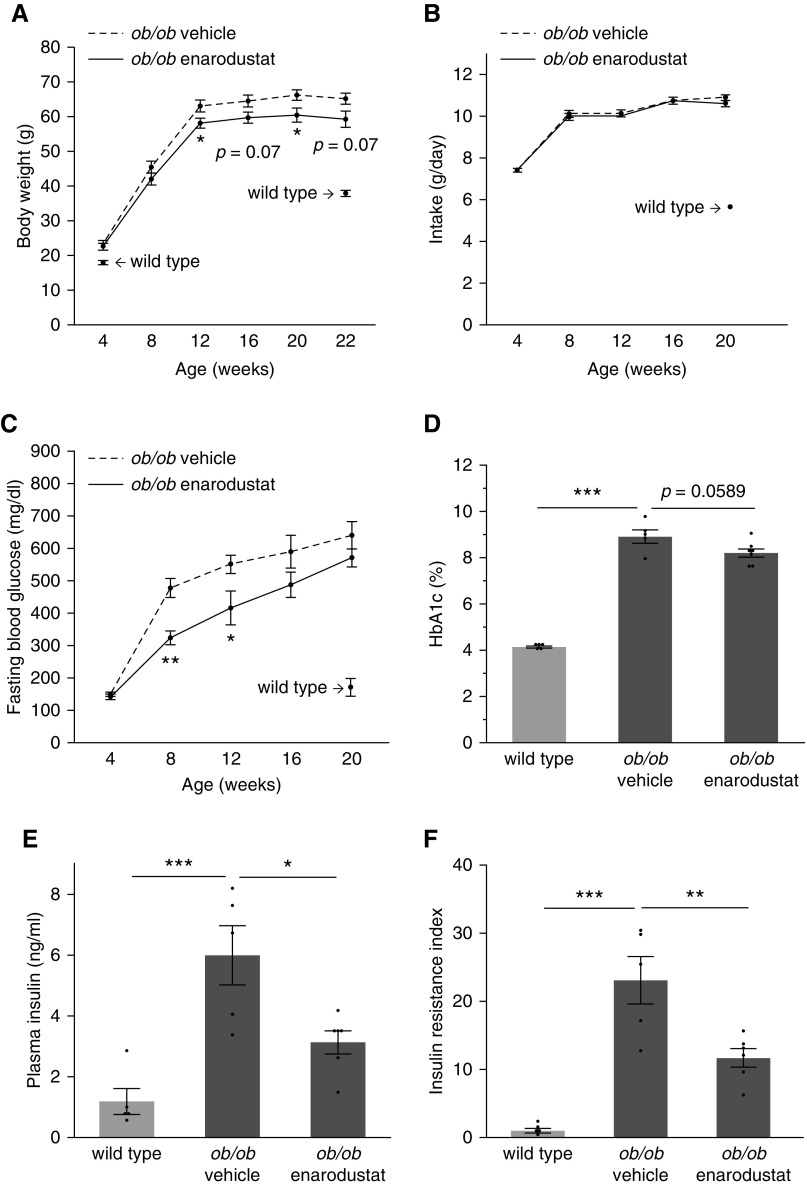Figure 2.
Enarodustat suppressed body weight increase and improved glucose metabolism in BTBR ob/ob mice. (A) Body weights of BTBR ob/ob mice at 4, 8, 12, 16, 20, and 22 weeks of age. Body weights of BTBR wild-type mice at 4 and 22 weeks are shown for reference. (B) The amount of food intake by BTBR ob/ob mice at 4, 8, 12, 16, and 20 weeks of age. Intake of BTBR wild-type mice at 20 weeks is shown for reference. (C) Fasting blood glucose levels of BTBR ob/ob mice at 4, 8, 12, 16, and 20 weeks of age. Data for BTBR wild-type mice at 20 weeks is shown for reference. (D) Hemoglobin A1c and (E) plasma insulin levels of BTBR wild-type and BTBR ob/ob mice treated with either vehicle only or enarodustat at 22 weeks. (F) Insulin resistance index was determined as the product of fasting blood glucose and plasma insulin levels, expressed relative to that of wild-type mice. Data are expressed as means±SEM; wild-type, n=5; ob/ob vehicle, n=5–6; ob/ob enarodustat, n=6–7. *P<0.05; **P<0.01; ***P<0.001.

